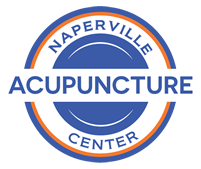Understanding Tendinitis and Tendinosis
Tendons are thick, cord-like structures. They connect the muscle to the bone. Healthy tendons are quite strong and not easily injured. They are rich in type I collagen, which makes them stronger than muscle.
Inflammation of the tendon is commonly known as tendinitis. However, you may be suffering from a lesser-known condition, called tendinosis. A tendon which is chronically damaged undergoes degeneration. The collagen fibers become disorganized and take on a hard, thickened, scarred and rubbery appearance.
Your daily activities create “wear-and-tear” on the tendons. Ordinarily, they are repaired as quickly as you break them down. Aging or repetitive use can exceed your normal rate of repair. Other factors that can contribute to degeneration include hormonal influences, persistent inflammation, and long term corticosteroid use.
Tendinosis can occur in any tendon throughout the body. It is most often found in the Achilles tendon, wrist , elbow , patellar (knee) or rotator cuff. Tendinosis usually occurs where the tendon attaches to the bone, but can also occur in the middle of the tendon, most commonly seen in the Achilles tendon.
Tendinosis is a result of repetitive movements or strain, without giving the tendon time to heal and rest. Even small movements, like clicking a mouse can cause a reduction of type I collagen fibers. These are replaced by a form of disorganized and less flexible scar tissue.
Tissue studies show that tendinitis occurs AFTER tendinosis. A healthy tendon is up to twice as strong as a muscle, but when a tendon has degenerated at the cellular level, then it becomes weaker and can be injured, thus leading to tendinitis. Tendinosis is often responsible for the pain and burning in the affected area. It can also cause decreased strength and flexibility. It will also make many activities painful. As you get older, you are more vulnerable to tendinosis.
Biceps Tendinitis
This pain, felt in the shoulder, most commonly caused by swimming, throwing, reaching, or weightlifting. Often hurts and throbs at night while trying to sleep, may make brushing hair difficult.
Golfer’s Elbow
Less common than tennis elbow, this is a pain on the inside of the elbow. It is not only caused by golf.
Tennis Elbow
Also called lateral epicondylitis. Common signs and symptoms of tennis elbow include pain or burning on the outer part of your elbow and weak grip strength.
Patellar Tendinitis
Pain at or below the knee, usually worse while going down stairs.
Plantar Fasciitis
This is the most common cause of pain on the bottom of the heel. Approximately 2 million patients experience plantar fasciitis each year!
The strong band of tissue that supports the arch of your foot becomes irritated and inflamed due to overuse or muscular imbalance.
Achilles Tendinitis
Conventional Treatment
Detailed Exam
A good exam leads to a good treatment. We take the time to examine your kinetic chain the muscles that are linked together to create movement. We use numerous tests to get to the root of the problem.
Experience
Since 2003, we’ve specialized in musculoskeletal treatment. Our acupuncturist has completed hundreds of hours of study and treated thousands of patients. He has a detailed knowledge of anatomy and tissue healing.
